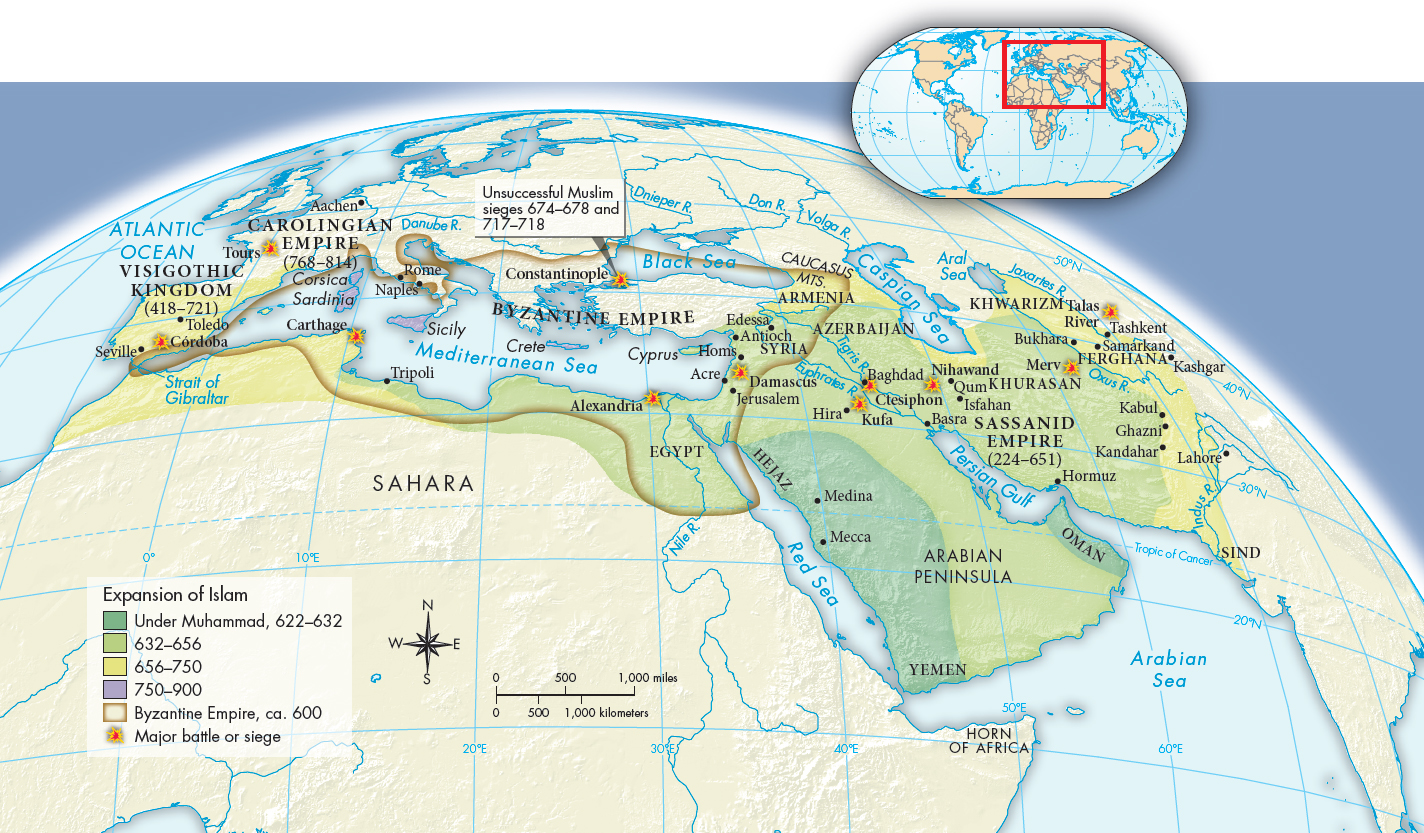Understanding World Societies:
Printed Page 238
Chapter Chronology
Islam’s Spread Beyond Arabia
After the Prophet’s death, Islam quickly spread far beyond Arabia. In the sixth century two powerful empires divided the Middle East: the Greek-Byzantine empire centered at Constantinople and the Persian-Sassanid empire concentrated at Ctesiphon (near Baghdad in present-day Iraq). From the fourth through sixth centuries the Byzantines and Sassanids fought each other fiercely, each trying to expand its territories at the expense of the other and to control and tax the rich trade coming from Arabia and the Indian Ocean region. Many peripheral societies were drawn into the conflict. The resulting disorder facilitated the growth of Muslim states.
The second and third successors of Muhammad, Umar (r. 634–644) and Uthman (r. 644–656), launched a two-pronged attack against the Byzantine and Sassanid Empires. One force moved north from Arabia against the Byzantine provinces of Syria and Palestine (see “Sources of Byzantine Strength” in Chapter 8). From Syria, the Muslims conquered the rich province of Egypt. Simultaneously, Arab armies swept into the Sassanid empire. The Muslim defeat of the Persians at Nihawand in 642 signaled the collapse of this empire (Map 9.1).

MAP 9.1The Expansion of Islam, 622–900The rapid expansion of Islam in a relatively short span of time testifies to the Arabs’ superior fighting skills, religious zeal, and economic ambition as well as to their enemies’ weakness. Plague, famine, and political troubles in Sassanid Persia contributed to Muslim victory there.> MAPPING THE PAST
ANALYZING THE MAP: Trace the routes of the spread of Islam by time period. How fast did it spread? How similar were the climates of the regions that became Muslim?CONNECTIONS: Which were the most powerful and populous of the societies that were absorbed into the Muslim world? What regions or societies were more resistant?
The Muslims continued their drive eastward and in the mid-seventh century occupied the province of Khurasan, where the city of Merv became the center of Muslim control over eastern Persia and the base for campaigns farther east. By 700 the Muslims had crossed the Oxus River and swept toward Kabul, today the capital of Afghanistan. They then penetrated Kazakhstan and seized Tashkent. From southern Persia, a Muslim force marched into the Indus Valley in northwest India and in 713 founded an Islamic community there. Beginning in the eleventh century Muslim dynasties from Ghazni in Afghanistan carried Islam deeper into the Indian subcontinent (see “India’s Medieval Age” in Chapter 12).
To the west, Arab forces moved across North Africa and crossed the Strait of Gibraltar. In 711 at the Guadalete River they easily defeated the Visigothic kingdom of Spain. Muslims controlled most of Spain until the thirteenth century. Advances into France were stopped in 732 when the Franks defeated Arab armies in a battle near the city of Tours, and Muslim occupation of parts of southern France did not last long.
